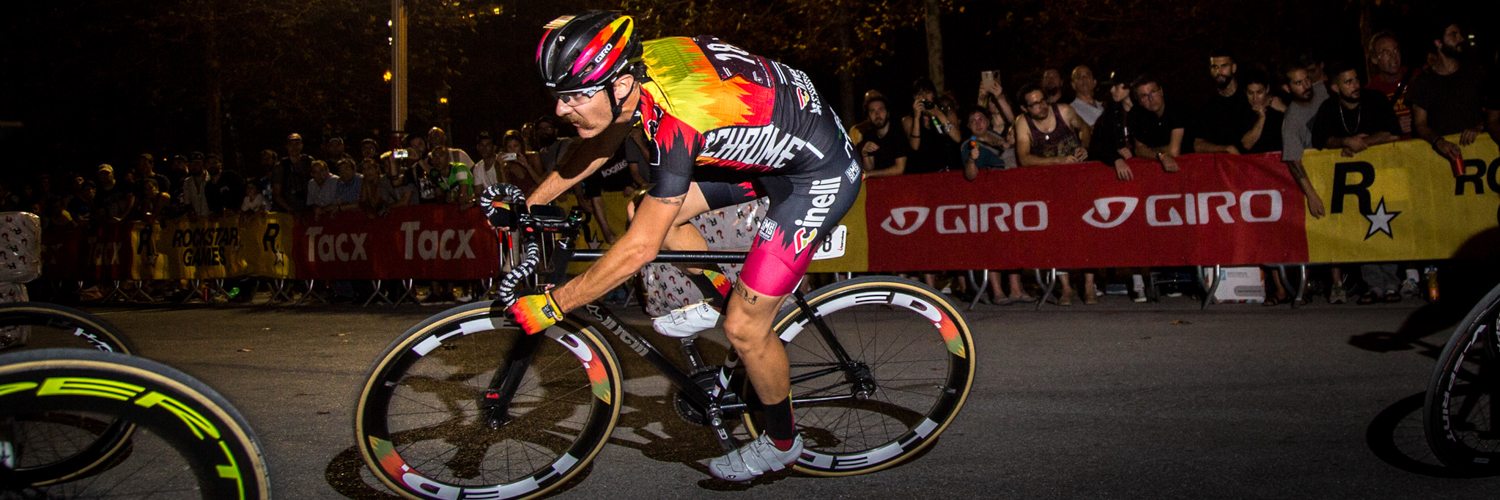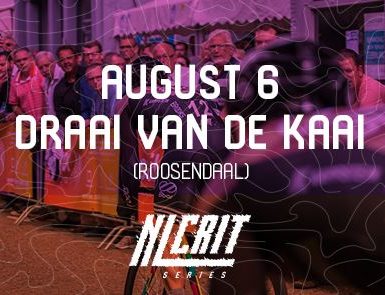A huge inspiration for us here at Fixed Gear Crit is the international community of fixed riders. From humble DIY roots in major cities in North America, bike messengers inspired people all over the world with their swift bikes and street style swagger. The fixed gear community has become a global phenomenon, taking the simple track bike out of the velodrome and onto the streets. Fixed gear riding has become a global movement that has evolved within the past decade into the races that we all know and love.
As this movement continues to grow and gain velocity, we here at FGC.com are happy to start a bit of investigative journalism. We will be speaking with different individuals from around the world in an effort to provide you with information regarding the very diverse backgrounds of the fixed communities on an international scale. Every city in every country has a unique story about how the local movement started very town, its own regional flavor. We are excited to be able to delve into the diverse histories of our community and to explore the finer points of our own recent past as we rocket towards the future.
I traveled to Novara, Italy to speak to legendary Gypsy Rider Paolo Bravini. An agricultural chemist by day, Paolo is riding for the 4th year in a row for the infamous Team Cinelli Chrome. Paolo spared me a bit of his time to recount the story of the fixed gear scene and crit community in Milano and Novara, Italy.

Text: Julia Wittman (juliasets)
Header Image: Tornanti.cc
Gypsy Rider a.k.a The Madness
Hey Paolo ! How are you doing ?
Doing well thanks !
Can you tell me a bit about how you got into cycling in the first place ?
For the first time? Well you know my dad is a cyclist, and when I was 6 years old he brought me to an amateur race and there were guys on my dad’s team that were asking me « Why don’t you want to try to race with your bike ? » So at 6 years old I tried it and I never stopped.
And so your dad probably had a lot to do with that…
Yes, he was pushing me a lot. When I was 12 or 13 I told him that I wanted to play basketball, and he told me « NO ! You have to continue to ride your bike ! »
So I assume you did a lot of riding together, you and your dad.
From when I was about 7 until 15 or 16 we would always ride together. Then I started to do longer races and eventually he said it was too much for him.
I know you have practiced a few different types of cycling leading up to your fixed gear crit career… can you speak a bit about that evolution ?
So I started on a road bike, and then after 6 or 7 years I started doing some races on the velodrome- it was a cycling school in Bustogarolfo, a velodrome near Novara, and also the velodrome of Francone near Turin. But I only did a little bit of track biking at the velodrome. Then when I was 15-16 years old I started to do cylcocross during the winter because I hate the gym, so I prefer to do something outside.

So when we think about the start of the fixed gear movement and community, we are thinking back to messengers in New York and later other big cities that were picking up these old track frames and building them up to ride in the city because they were light and low-maintenance. Now we see that it is an undeniable global phenomenon. How did the fixed gear scene start in Italy from your own experience ?
So in 2010, 2011 we did the first fixed gear crit. There were also alleycats before the criteriums started in Italy. I got into fixed gear in around 2010 because my friend had a fixed gear, and I saw it ansd said « hey- that’s a track bike » and he was the one that introduced me to fixed riding on the street. So I got right into it and I did my first crit in 2011 and haven’t stopped since.
So when you got introduced to this kind of cycling, was there already a kind of scene that had been established, or did you get into it at the very beginning ?
There were a couple people riding fixed gears but not very many at all, so yes I would say that I got into it pretty early on in Italy.
What kinds of backgrounds did the fixed gear riders have at this time ?
Phh… really everyone, all kinds of different people. Not athletes but messengers, some kids that saw the fixed gear bikes all around the world and wanted to try. In Italy at least the whole thing really exploded with those crazy Macaframa guys from California- a lot of kids were really inspired by that. Everyone was watching these videos and saying « I want to get a fixed gear and go bomb some hills, yeah ! ». So it did start as kind of a fashion.
It’s true that the roads around here (Milano/Novara) are pretty hilly, but nothing too crazy.
Yeah but fixie kids are crazy. No, but the hills are doable yeah.
Italy also has what one could consider to be an almost sacred relationship with cycling and bikes in general. I’ve heard it is the second most popular sport after futbol (football).
Yes it is really part of the history of Italy.
Momentum from Milano
JW: It seems to me that at least in the United States where I am from, before the fixed gear movement cycling wasn’t really given much attention by the young crowd. Road cycling was maybe considered to be « an old person sport ». Obviously we have velodromes here and there in the states, and there have always been niche riders who seek them out to practice track cycling. I don’t think that the USA at least has the same view of cycling at all when compared to Italy and France for example.
I really do believe as well that, despite the initial « trend » of fixed gear street bikes mostly considered to have started in North America, the overall movement in the past decade or so has really rejuvenated cycling. It has made cycling « cool » and inspired a much younger crowd to jump on a bike.What are your thoughts about this historical and very cultural relationship with cycling regards to the fixed gear community and movement in Italy ?
PB : So in the beginning of the movement, around 2010 there was this big explosion for the fixed gear bike in Italy. Everyone wanted one, but not really for the athletic aspect, at all. They wanted them because they were cool. And after 3 or 4 years, the “fake” riders (riders that were in it for the fashionable aspect of the bike) gave up on it. They said, “No, the fixed gear bike is not for me.” and abandoned the sport. Especially because at this time, around 2013-2014 the evolution towards fixed gear riding was really starting and gaining momentum. So more and more athletes started adopting the fixed gear bike as a discipline, and as a lifestyle. Conversely, it was the more athletic guys in the beginning that scoffed at the idea of riding fixed on the street. They thought it was just about bright colors and deep wheel sets, and not very well made frames… just trendy and fashionable. Now everyone wants a fixed gear to train on, to improve. And not just cyclists but athletes from other sports as well, they see it as a good way to cross train.
JW: So it’s kind of this inversely proportional thing going on.
PB: Yeah, exactly. It’s an inversion. And in the past few years a lot of people who started on fixed gear bike are getting into other kinds of cycling as well… road biking, mountain biking CX etc.
JW: And this is one thing that I find so interesting about fixed riding. It seems to have become this interdisciplinary crossroads in a way, for cyclists of course but even other kinds of athletes as well. It’s a very interesting aspect about our community, and something that really fascinates me. I also heard that you got disqualfied from racing for a few months in your earlier racing years. What happened?
PB: Yes that’s true. There was this guy who I would see at the races who was always giving me a hard time. Always insulting me and swearing at me, trying to get into my head before the race… calling me a son of a bitch. So one day I got fed up and I said, “Ok, you think I’m a son of a bitch? I’ll be a son of a bitch”. So when we were in the race I grabbed his handlebars at 50km per hour and he crashed pretty bad. We were both disqualified.
JW: Wow that’s intense! Did he get hurt?
PB: Me? No, I was fine. Haha, no he didn’t get hurt very badly. A few scratches but no broken bones. We were both disqualified actually. I was disqualified from racing for three months so I took that time off to go to University and get a degree.
Criteri Italiani
JW: When and where were the first fixed crits organised in Italy?
PB: In 2010 around Modena, there was a crit and then that same year there was another one in Lucca called Criterium Lucca delle Mura. That was sort of a strange criterium, because it’s a long course. The circuit goes all around the city of Lucca so about 8 or 9 km for one lap, and there are 3 laps in total. Then after the criterium in Modena, David Trimble came with the Red Hook in Milano number 1. I raced the second Red Hook in Milano the following year and I haven’t stopped since. After the RHC in Milan there was really an explosion of crits and the fixed scene in general. Actually from 2010 to 2015, 2016 most of the crits and races were illegal.
JW: Really? How did that work?
PB: Yeah, totally illegal. We would find places that seemed like they would make good circuits in different industrial zones, and then it would be word of mouth. Sometimes we would post things on Facebook to get the word out.
JW: Did anyone ever get in trouble?
PB: No, no. Only one time at the Parco Lambro the police showed up to the race and they said that we were too fast to be riding in the park, so we just said “Yeah no problem” and then they left and we continued. Even today the Lambro crit is technically illegal, and it’s one of the most important crits in Italy. This year, in June will be the first year that the Lambo Crit series will be legal because the city of Milan finally agreed to do that.
JW: Then that’s going to make the upcoming Lambro Crit an even bigger deal!
PB: Yeah definitely! With the first series of the Lambro crit back in March there are 3 categories, road bikes, fixed gear “pro” and fixed gear “easy” and there were 150 of us participating.
JW: Do you think that there is a difference now with how newcomers are approaching the sport in when compared to a few years ago?
PB: Yeah, definitely. Now people who are coming onto the scene are already riders, they know how to cycle and they are looking for a new challenge. They know the material, they know how to build bikes, and they know how to train. Pro riders and more amateurs alike, but it’s no longer this idea like “Oh hey, what a cool bike, I want to do something with this kind of bike”. No. People now already know what they are getting into, they know what they are doing.
 Olympic Objectives
Olympic Objectives
JW: So with the 10th anniversary of the Red Hook Crit in Brooklyn coming up, it almost seems like we are hitting a milestone with the fixed crit community. It’s something that started out very small, and in the past decade, even in the past few years it has experienced an astonishing growth, and become really an international phenomenon.
PB: Yeah, Red Hook is growing really fast. Like a snowball effect! Like a valanga! I think that with the evolution of the Red Hook Crit, and the impact it has had worldwide, how it has inspired so many to start fixed crits in their own countries, it is becoming like a “real sport”. We train, we race… I think that Red Hook Crits are like the Olympics when you are talking about the level of athleticism and technical skill. I think there are two possible destinies for the Red Hook Crits: The X-Games or The Olympic games.
JW: Thats an interesting way of looking at it. Which direction would you prefer personally?
PB: Well obviously The Olympic Games, I think it’s more important. And everyone wants to do the Olympic games no? The X-Games are not known by everyone. That being said, I still consider fixed gear criteriums as an extreme sport. First, we race without breaks. Then we can have 8 or 9 turns in 1.5 km… that isn’t a normal set up for a bike race, it’s very particular. Everyone wants to be in the front of the pack, skidding, moving fast, never coasting, pushing other riders. It’s not unsafe, I think it is just as safe as a road bike criterium. Though I do think that we are more bonded with the bike on a fixed gear than on a road bike. Whereas on a road bike, if you think you are heading towards a fall, you will put your hand down to try to save your balls, or yourself. On a fixed gear you try as hard as you can to recover the bike, even when you think you are heading towards a crash or a fall. I feel like there is more of a strong feeling towards the bike with a fixed gear.
JW: Do you think that the DIY, almost punk roots of this kind of racing is an impediment for the Olympic games, if ever?
PB: No, I mean snowboarding and BMX are both Olympic sports. It’s the same kind of thing.
JW: So apart from maybe becoming an Olympic sport one day, how would you like to see the fixed-gear criterium movement progress? What do you think is important for the crit family and the community as a whole moving forward knowing that there is going to be even more evolution to come?
PB: I think that now it is still pretty young. It’s too young. We need to develop a sport community that recognizes the fixed gear crit racing as a real sport, that respects the discipline as a unique and worthy cycling practice. When the worldwide sport community can say “Ok, the fixed gear sport is a legitimate kind of cycling” and then I think the sport can become a part of The Olympic games. I think what we have to do is just continue to race. We need to continue to organize bigger races with big sponsors, like Red Hook to attract even more attention and gain recognition for what we are doing.
JW: What advice could you give to newcomers who are just starting out?
PB: Definitely to try to think about the roots. The old riders are already in the pack, and they have a lot of knowledge about the other riders and how they perform, and also can remember important things that have happened in past races. Basically, do your homework is my advice. Talk to riders and ask questions. You can’t stay isolated in this sport- you have to integrate because that’s what makes this such a strong community. That is what I really like about the fixed gear crits, is that we really are real family. For example when bikes get stolen from races, as happened to me three years ago in London and then Stephan Vis’s bike in Milano last year. Other guys from different teams where all on the lookout, and because of their help we were able to recover the bikes. So even if we are competing against one another, we care about one another too. So yeah, for newcomers I would say, don’t think as an individual rider. The riders now know how to ride, we know how to train, we know how to skid, because we have experience. So now it is really important just to get to know your fellow riders and become a part of the family.
JW: Ok last question. Is there any one race that you are particularly looking forward to this season?
PB: I hope to be able to race again in South Korea or in Thailand because I have a lot of friends there and I really love the Asian community. They are always super excited when we race there. It’s a really big family and a great energy.
JW: Thanks Paolo! We’ll have our eyes on you in New York!
PB: Thank you too! I hope to make at least one point in Brooklyn.




